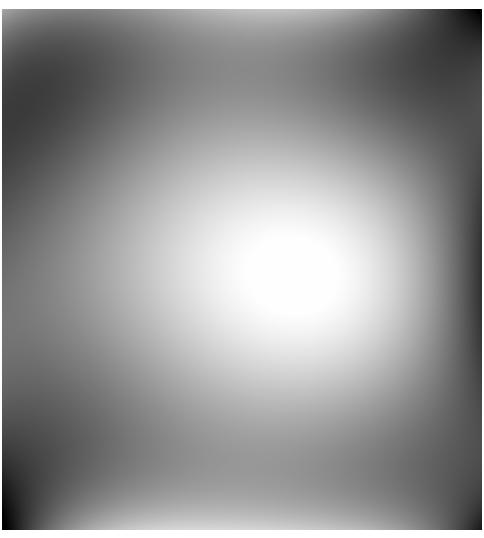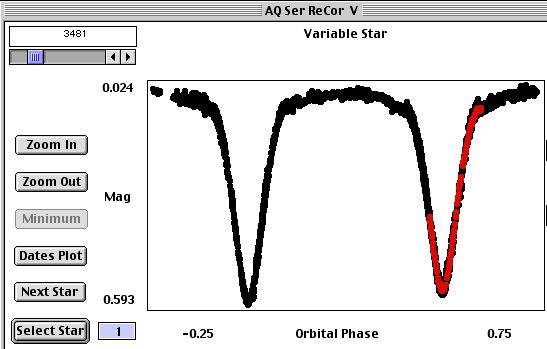
To use this correction on older images(before p52853_***.fit), multiply
With the refit of the filter wheel and camera in the summer shutdown 2006,
the correction changed. There were a few iterations as the orientation and
header of the new image was adjusted. For awhile, various corrections were
applied:
53966 to 53995 riM67.53995.fit
53996 to 54005 riM67.54005.fit
53006 to 54007_ADL riM67.54006.fit
rest of 54007 riM67.54007.fit
54008 and on riM67f2.fit
On 09/29/06 all the above files were normalized to the new correction file,
also known as correction0806.fit.
The dates 53996 to 53005 suffered a 4 fold loss of dynamic range.
On November 2, 2006 a new set of baffles(made from metal) was installed. The new correction image is correction1106.fit. It was installed permanantly on jd 2454046 and retrospectively applied to 42-45.
This file is applied automatically to your images. It should result in better that 1% accuracy in photometry in most of the field.
When taking 'deep images' of the night sky and repeatedly co-adding images, (for non-photometric applications) it may be better to use the 'uncorrected' option for taking exposures. With the correction, one will see a brighter sky in the center of the image. It will be photometric but not aesthetic.
To convert a image to an 'uncorrected state' multiply by cor0806.fit for images from 53996 to 54041.
To convert a image to an 'uncorrected state' multiply by cor1106.fit for images from after 54041.
(Dr. Claud Lacy writes) Here is a plot of the results of applying the
correction flat to all the older image from NFO of AQ Ser with
NFO-Measure 2.01. The standard deviation of the data at most phases is
now about 0.006 mag, which is excellent. There are some nights where it
is clear that there is a residual bias on the order of 0.01 mag, but
these can be corrected for during the analysis of the data. "It
takes
some time to remeasure the old data, but it is worth it!"
